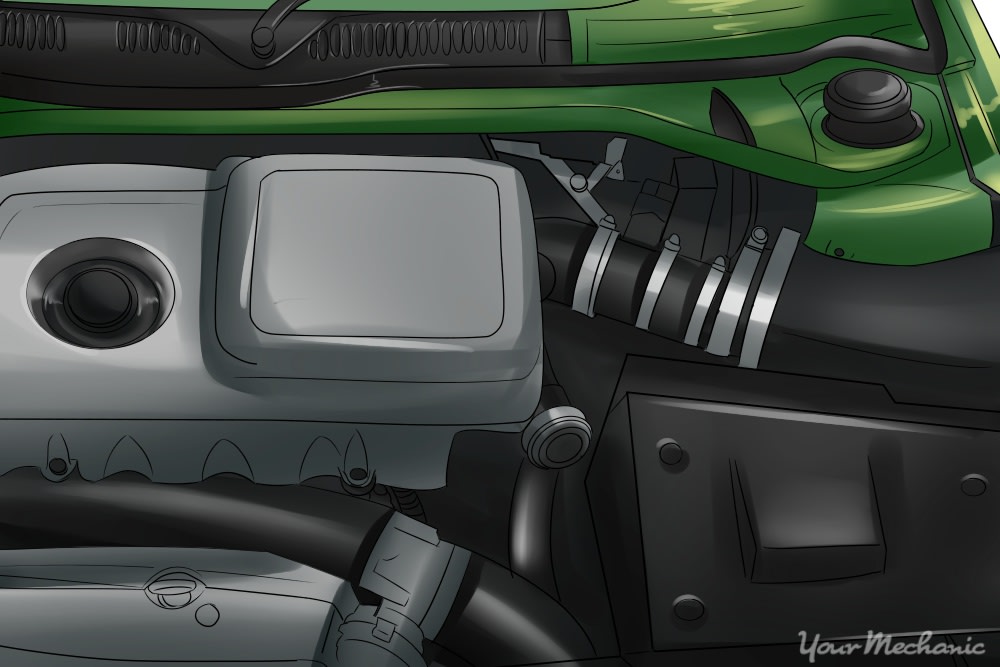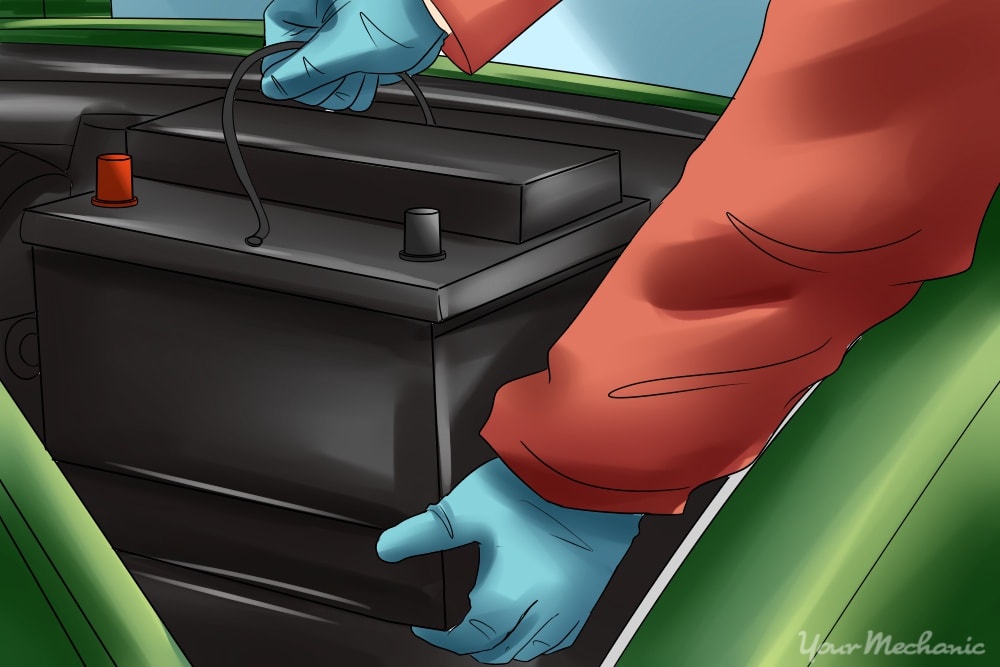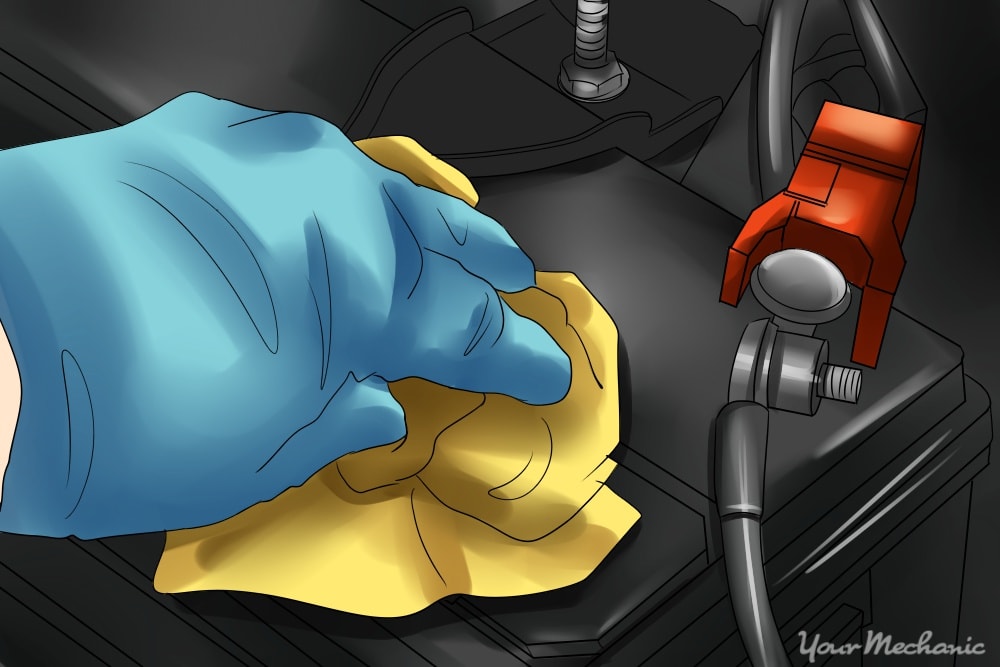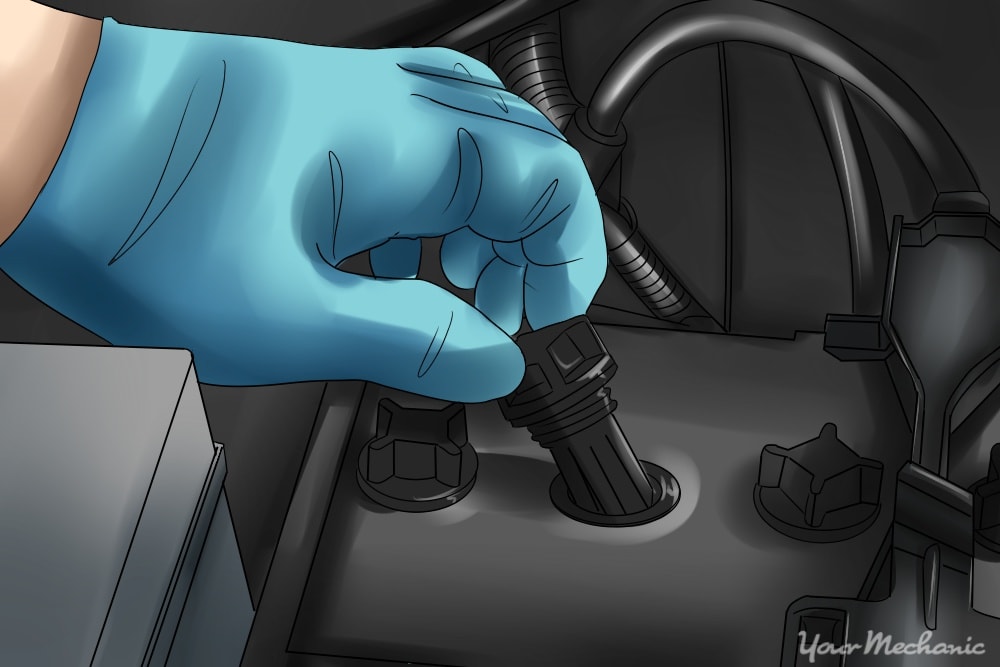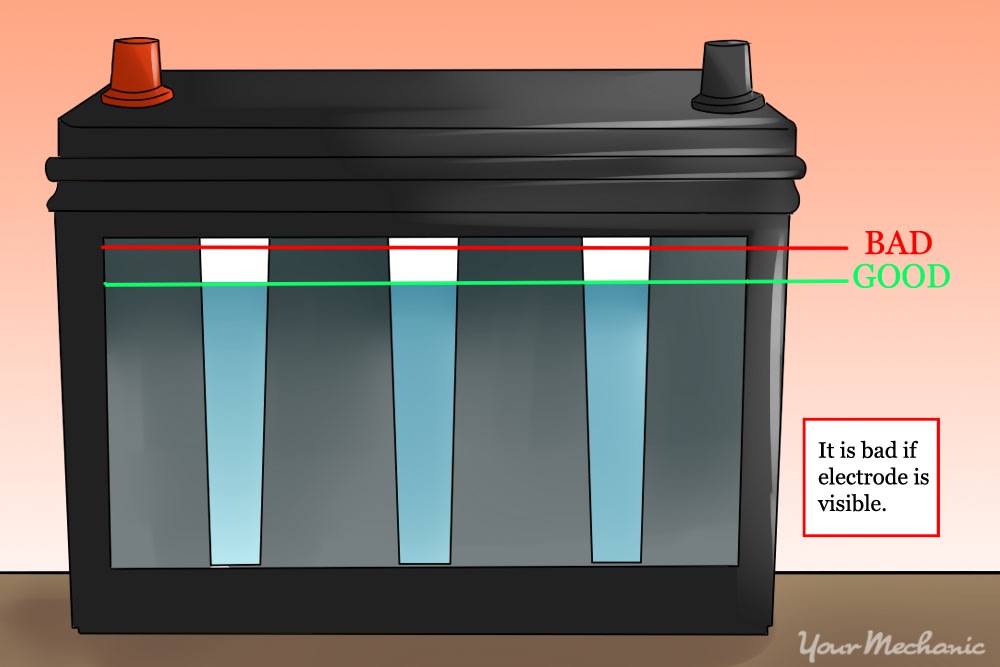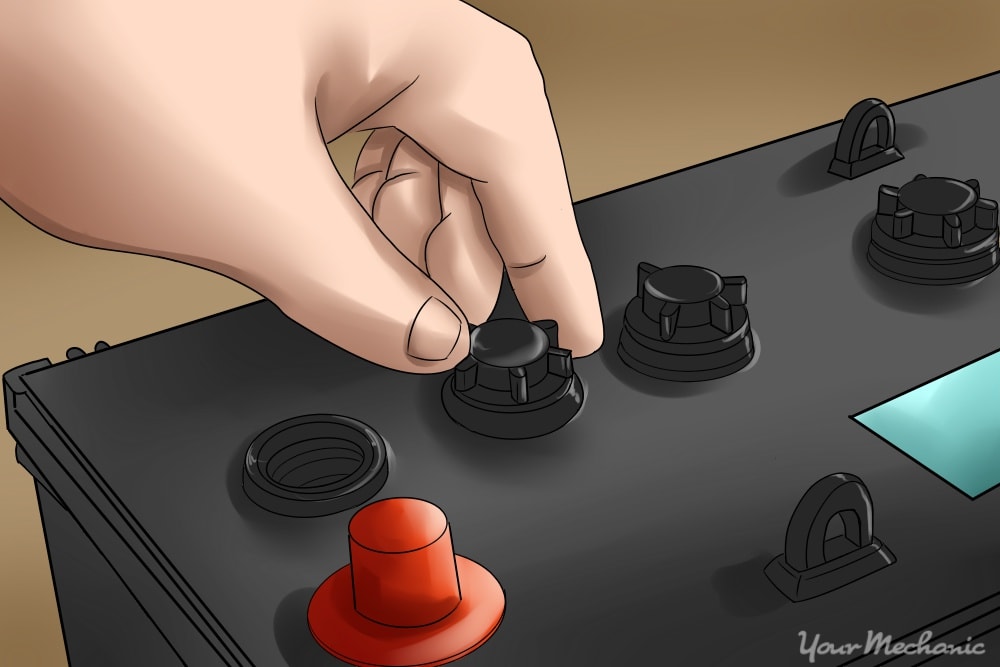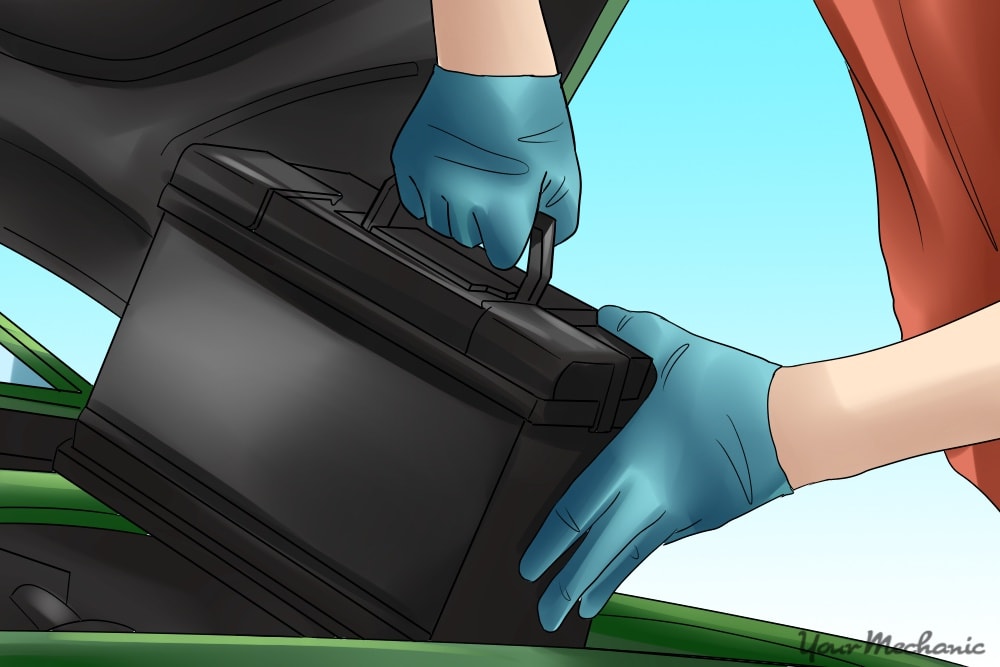

Part of what makes a modern battery work so effectively is the ‘wet cell’ design they utilize. In a wet cell battery, there is a mixture of sulfuric acid and distilled water (called electrolyte) that connects all of the battery’s electrodes that are located within each cell. This liquid may leak, evaporate, or otherwise be lost over time.
You can check and even refill these cells at your home using a few simple tools. This could be done as routine maintenance or as a response to diminishing performance from the battery itself.
Part 1 of 2: Inspect the battery
Materials Needed
- A wrench (only if you’re going to remove the clamps from the battery terminals)
- Safety goggles or shield
- Protective gloves
- Rags
- Baking soda
- Distilled water
- Putty knife or flat head screwdriver
- Cleaning brush or toothbrush
- Small flashlight
Step 1: Put on safety gear. Before beginning any work on your vehicle, put on proper safety equipment.
Safety glasses and gloves are simple items that can save you a lot of trouble later on.
Step 2: Locate the battery. The battery is rectangular and has a plastic outer surface.
The battery is usually found in the engine compartment. There are exceptions to this, for instance some manufacturers put the battery in the trunk or beneath the rear seats.
- Tip: If you cannot find the battery in your car, consult the vehicle’s manual.
Part 2 of 3: Open up the battery
Step 1: Remove the battery from the vehicle (optional). As long as the top of the battery is accessible, you can carry out each step to check and refill the electrolyte with the battery still in your vehicle.
If the battery is not easily accessible in its current position, it may be necessary to remove it. If that is the case with your vehicle, here is how you can easily remove the battery:
Step 2: Loosen the negative cable clamp. Use an adjustable wrench, socket wrench, or just a regular wrench (of the appropriate size) and loosen the bolt on the side of the negative clamp holding the cable onto the battery terminal.
Step 3: Remove the other cable. Lift the clamp off of the terminal and then repeat the process to remove the positive cable from the opposite terminal.
Step 4: Open the securing bracket. There is usually a bracket or housing securing the battery in place. Some need to be unbolted, others are secured with wing nuts that can be loosened by hand.
Step 5: Remove the battery. Lift the battery up and out of the vehicle. Bear in mind, batteries are quite heavy, so be prepared for the mass of the battery.
Step 6: Clean the battery. The electrolyte fluid located inside of the battery should never be contaminated, as it will drastically shorten the life of the battery. To prevent this, the outside of the battery should be cleaned to remove dirt and corrosion. Here’s an easy way to clean your battery:
Make a simple mixture of baking soda and water. Take about a quarter-cup of baking soda and add water until the mixture has a thick milkshake-like consistency.
Dip a rag into the mixture and lightly scrub down the entire outside of the battery. This will neutralize corrosion and any battery acid that may be on the battery.
Use an old toothbrush or a cleaning brush to spread the mixture onto the terminals, scrubbing until the terminals are free of corrosion.
Take a moist rag and wipe any remaining baking soda off of the battery.
- Tip: If there is corrosion on the battery terminals, then the clamps that hold the battery cables onto the terminals will most probably have some corrosion as well. Clean the battery clamps with the same mixture if the corrosion levels are low or replace the clamps if the corrosion is high.
Step 7: Open the battery port covers. The average car battery has six cell ports, each containing an electrode and some electrolyte fluid. Each of these ports are protected by plastic covers.
These covers are located on top of the battery and are either in the form of two rectangular covers or six individual round covers.
Rectangular covers can be removed by prying them off with a putty knife or flathead screwdriver. Round covers twist off like a cap, simply turn counterclockwise.
Use a damp rag to wipe away any dirt or grime located underneath the covers. This step is as important as cleaning the whole battery.
Step 8: Check the electrolyte levels. Once the cells are open, it is possible to look down straight into the battery where the electrodes are located.
The liquid should completely cover all of the electrodes, and the level should be the same in every cell.
- Tip: If it is difficult to see into the cell, use a small flashlight to help illuminate it.
If the electrolyte levels are not equal, or if the electrodes are exposed, you will need to refill the battery.
Part 3 of 3: Refill the electrolyte in the battery
Step 1: Check the amount of distilled water needed. First you need to know how much liquid to add to each cell.
How much distilled water needs to be added to the cells depends on the condition of the battery:
In a new, fully charged battery, the water levels can be filled up to the bottom of the filler tube.
In a old or dying battery, the water should only be filled enough to cover the electrodes.
Step 2: Fill the cells with distilled water. Based on the assessment made in the previous step, fill each cell with the appropriate amount of distilled water.
Try to fill every cell to the same level. Using a bottle that can pour a small amount of water in at a time is a big help, precision is key here.
Step 3: Replace the battery covers. If your battery has square cell port covers, line them up with the ports and click the covers in place.
If the ports are round, turn the caps clockwise to secure them onto the battery.
Step 4: Start your car. Now that the whole process is complete, start the engine to see how the battery performs. If performance is still sub-par, then the battery and should be tested and replaced if needed. The charging system’s performance must also be checked for any issues.
If your car’s battery does not hold a charge or if you do not want to check the battery electrolyte levels yourself, call a qualified mechanic, such as one from YourMechanic, to have the battery inspected and serviced.



